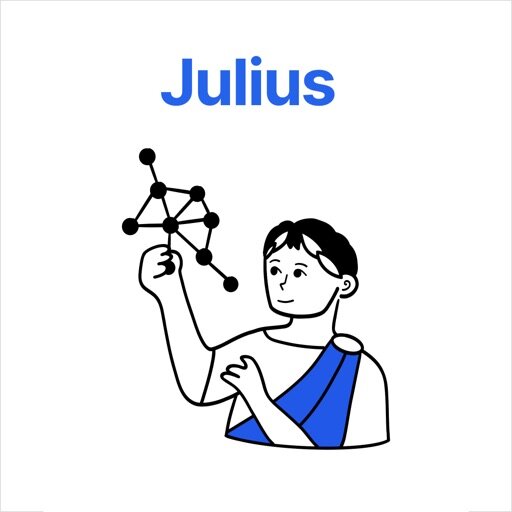May 6th, 2025
Julius AI vs. Looker: What’s Better for Data Analysis and You?
By Connor Martin · 5 min read


No matter what type of raw data you’re working with, you need reliable, trustworthy data analysis tools to help you sort, manipulate, and visualize your findings. Whether you’re a statistical analyst looking at population growth or a business data manager trying to predict peak sales periods, the right app can make the difference between clarity and confusion.
That’s why we’ve brought together this comprehensive Julius AI vs. Looker guide, exploring two tools capable of complex data analysis, and why you might want either one.
Key Takeaways
• Looker offers powerful data modeling and enterprise-level governance, but requires technical expertise and a steeper learning curve.
• Julius AI delivers fast, AI-powered insights through a no-code, natural language interface, making it accessible for users at any technical level.
• Choosing the right tool depends on your needs—Looker excels in large-scale, structured environments, while Julius AI shines in speed, ease of use, and automation.
Overview of Each Tool
Here’s a quick overview of what each tool does to get you started.

Looker
Looker is a business intelligence (BI) platform that enables users to create complex data models and achieve data visualization at scale. Looker was acquired by Google in 2019 and is now part of the tech giant’s extensive Google Cloud Platform.
The platform offers a strong data modeling layer via its own language, LookML, that constructs SQL queries for databases using a unique programming dialect. There’s a strong focus on data governance and security, making the platform suitable for larger enterprises in sensitive industries. Users can customize data and dashboards as needed.
While it’s not only data scientists who use Looker, it does have a steep learning curve. The setup can be highly technical, and many users will require additional support to get the most out of the platform. Some data analysts may even require resource optimization to solve problems like latency that can slow the platform down.

Julius AI
Julius AI is a relatively new data analysis solution that leverages machine learning and AI tools and techniques such as natural language processing and generation (NLP and NLG) for user-friendly data manipulation and visualization. It’s easy to generate actionable insights with Julius AI, making it applicable in a range of data modeling scenarios.
Users find Julius AI applicable for all types of data analysis scenarios, from academic statistics to business-critical insights. AI-powered data visualizations can be automated when the source data changes, for continuously new and updated insights.
Feature Comparison
All data analytics tools offer different features. Take a look and see which tool performs better for your particular use case.
Data Modeling and Structuring
Thanks to LookML, data modeling with Looker can be as in-depth as you need. Julius AI also offers data modeling capabilities for almost any situation via a no-code, natural language interface. Take your raw data and structure it any way you need by simply telling the interface what you want to do.
Data Analysis and Querying
The ability to quickly and accurately analyze data is one of the core requirements of data analysis tools. Both Julius AI and Looker provide the ability to assess historical data patterns or focus on forecasting and predictive analytics. Queries are slightly easier with Julius AI thanks to the NLP/NLG interface.
Automation and AI
Both platforms offer automation, however, Looker users will find that they have to utilize some programming expertise to gain the most from these features. With Looker, users often need to build or configure automation workflows manually, requiring some background in SQL or data engineering.
Julius AI eliminates that barrier, offering fully automated insights based on simple natural language queries. This makes Julius a strong choice for teams that need quick, scalable analysis without relying on technical specialists. Julius AI provides AI-powered automation without the need for any previous coding experience.
Visualization and Dashboards
Create beautiful, accessible visuals with ease using either platform. The steeper learning curve with Looker might mean that it takes longer to achieve the results you want.
Collaboration and Sharing
Looker is highly focused on secure data governance, which means you should be able to share within your teams or with authorized personnel. Julius AI allows you to share insights as needed while still providing better-than-industry-standard security and data privacy.
Customization and Flexibility
Each platform allows you to input data and customize or manipulate it to your requirements. You can choose exactly how data is visualized and what format it should appear in. Looker provides a deeper level of customization for those with some coding experience.
User Experience and Learning Curve
Looker offers extensive features but can be difficult to master. As well as being one of the most intuitive AI data analytics tools available, Julius AI takes a no-code approach, making it completely accessible for non-technical personnel.
Pros and Cons: Looker vs. Julius
Looking for a quick guide to Julia AI vs. Looker? Here are the pros and cons of each data analysis tool.
Looker
Pros:
• Powerful data modeling via LookML
• Enterprise-ready governance and security
• Deep integration with the Google Cloud ecosystem
• Highly customizable
Cons:
• Requires technical expertise to fully utilize
• Slower time-to-insight compared to AI tools
• Higher implementation complexity
Julius AI
Pros:
• AI-powered insights requiring little manual input from users
• Ideal for fast data discovery
• Easy to use, even for non-technical users
• Quick setup with minimal configuration
Cons:
• Cloud-only platform
• Less control over data modeling
• Limited enterprise-level governance
How to Choose the Right Tool for You
Consider your use case. If you need to integrate multiple business data pipelines and have the expertise to do this, Looker could be the right option for you. Conversely, if you have multiple data sets available and simply need a tool that can quickly sift through them for insights, Julius AI could be the answer.
AI is already shifting the way data analysts work, with 82% of data-based professionals stating that they believe AI will enhance how they work. AI replaces the drudgery of dredging huge datasets for patterns, but also helps you create stunning visualizations that are both practical and accessible.
Ready to Try Julius for Yourself? Experience Fast, AI-Powered Insights for Free Today
AI-powered automation and insights using your carefully gathered data are just a few clicks away. There’s a simple way to settle the Julius AI vs. Looker debate – get started with Julius AI for free and discover its capabilities for yourself.
Frequently Asked Questions (FAQs)
Does Looker have AI?
Looker offers some AI and machine learning integrations, especially through the broader Google Cloud ecosystem. However, using these capabilities often requires additional configuration and technical knowledge compared to tools that are AI-first, like Julius AI.
Which AI tool is best for analyzing and visualizing data?
The best AI tool depends on your needs, but Julius AI stands out for its fast, automated insights and easy-to-use natural language interface. It’s ideal for users who want to move quickly from raw data to actionable visualizations without a steep learning curve.
Is Julius AI good for statistics?
Yes, Julius AI is a strong choice for statistical analysis, offering an intuitive, no-code interface that simplifies complex calculations and data modeling. It’s particularly useful for users who want to automate insights without needing advanced technical expertise.
Why is Looker so popular?
Looker’s popularity comes from its powerful data modeling capabilities, enterprise-grade governance, and strong integration with Google Cloud services. It’s a go-to solution for organizations that need deep customization and rigorous control over large, complex datasets.
Is Looker better than Tableau?
Looker and Tableau serve different needs—Looker excels in data modeling and cloud integration, while Tableau shines in flexible, advanced data visualizations. If you're looking for a faster, AI-powered alternative that’s accessible to all users without a steep learning curve, Julius AI offers a compelling option to consider.
